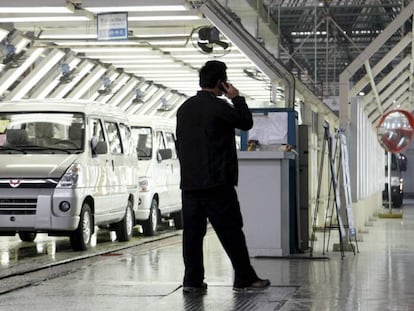Is the European Union going to ban repairing old vehicles to force the purchase of electric ones?
The future ban on combustion engines raises the question of what to do with so-called residual cars

The European Union has made its intentions clear regarding combustion engines. As of 2035, vehicles with internal combustion engines will no longer be produced or marketed, in favor of electric or hydrogen vehicles.
Since it was announced, that decision has aroused some controversy. First, several countries formed a front to defend the use of synthetic fuels. However, the latest studies show that the price per liter of e-fuels will be very high.
In any case, what will happen to the old cars that are still in circulation? The idea has spread on social media that the European Union could eventually ban their repair, which would force drivers to buy more sustainable cars before they are the only ones on sale.
The European Commission is preparing a new regulation that deals with the management of end-of-life vehicles. The new text aims to define the concept of residual vehicle.
Repair of residual vehicles
Residual vehicles would refer to those that suffer breakdowns related to parts such as the engine, transmission, brakes, steering wheel and chassis, and that are about 15 years old. Many people have said that the European Union wants to prohibit the repair of such vehicles.
However, the European Commission denied this report on its X social media page. The post explains that one objective of the new regulation is to facilitate the repair of old vehicles in a more sustainable and responsible way.
However, it also explains that there will be certain types of engines that cannot be repaired. On the other hand, in cases where the owner of a car categorized as a residual vehicle wants to sell it, the car could be considered to be at the end of its useful life. As such, it should be taken to a junkyard.
When a car cannot be repaired
The Commission’s text, which still has to be approved, explains the cases in which a vehicle is considered to be an end-of-life car. A vehicle will be considered irreparable when any of its components cannot be repaired or replaced. Likewise, if its structural elements have irreversible technical defects, the car would be considered irreparable.
Described in the appendices of the text, these measures are intended to prevent abuses in the secondhand market by limiting attempts to sell end-of-life cars. Many of these sales contribute to increasing road accidents and pollution levels by continuing to keep excessively old and poorly repaired vehicles in circulation.
Sign up for our weekly newsletter to get more English-language news coverage from EL PAÍS USA Edition
Tu suscripción se está usando en otro dispositivo
¿Quieres añadir otro usuario a tu suscripción?
Si continúas leyendo en este dispositivo, no se podrá leer en el otro.
FlechaTu suscripción se está usando en otro dispositivo y solo puedes acceder a EL PAÍS desde un dispositivo a la vez.
Si quieres compartir tu cuenta, cambia tu suscripción a la modalidad Premium, así podrás añadir otro usuario. Cada uno accederá con su propia cuenta de email, lo que os permitirá personalizar vuestra experiencia en EL PAÍS.
¿Tienes una suscripción de empresa? Accede aquí para contratar más cuentas.
En el caso de no saber quién está usando tu cuenta, te recomendamos cambiar tu contraseña aquí.
Si decides continuar compartiendo tu cuenta, este mensaje se mostrará en tu dispositivo y en el de la otra persona que está usando tu cuenta de forma indefinida, afectando a tu experiencia de lectura. Puedes consultar aquí los términos y condiciones de la suscripción digital.










































